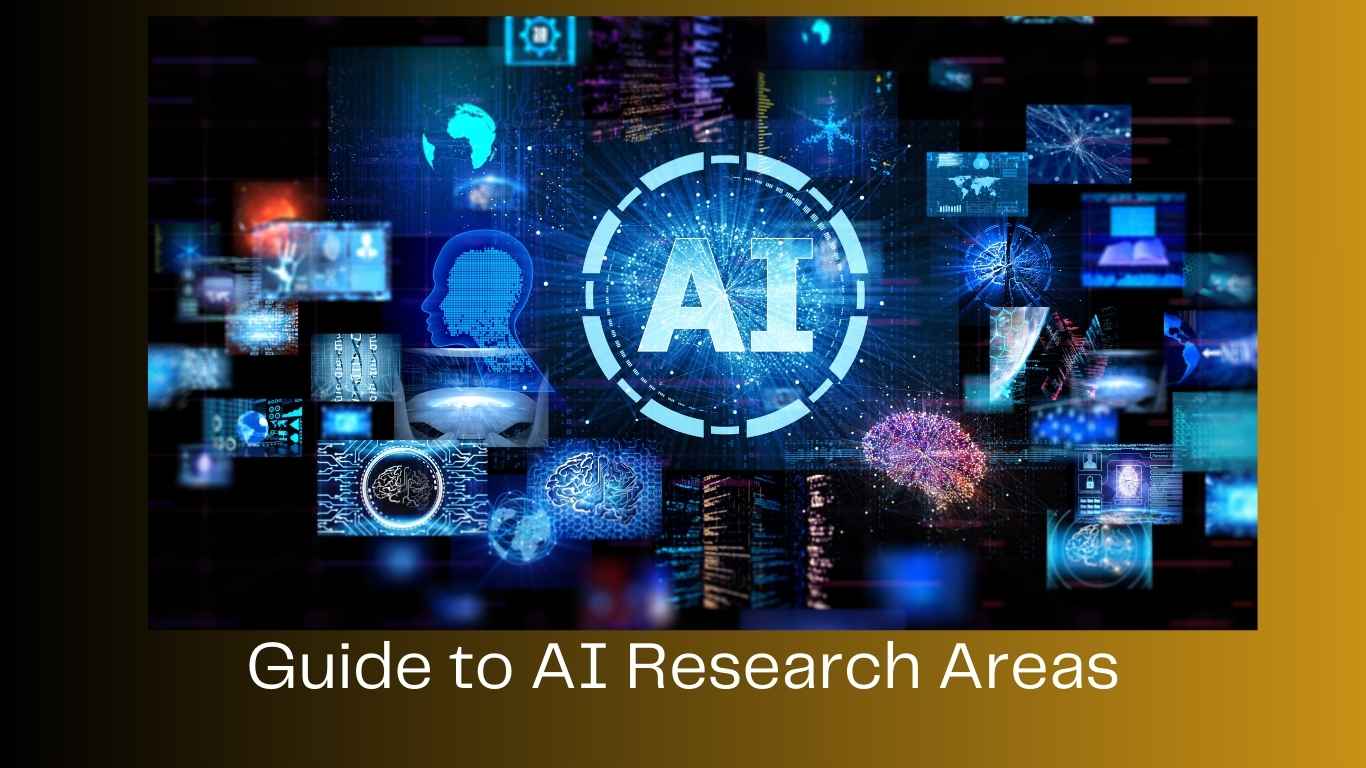A Beginner Best Guide to AI Overview in 2025
AI Overview: A Complete Beginner’s Guide to Artificial Intelligence
Introduction: Why You Should Understand AI Today
Artificial Intelligence (AI) is no longer a futuristic fantasy—it’s the reality shaping our present and defining our future. From virtual assistants like Siri and Alexa to complex systems managing self-driving cars, healthcare diagnostics, and financial markets, AI is embedded in almost every industry.
This comprehensive AI overview is crafted for students, beginners, tech enthusiasts, and even business leaders who want to grasp what AI is, how it works, its types, applications, and what the future holds.
What Is Artificial Intelligence (AI)?
Artificial Intelligence is the field of computer science focused on creating machines and systems that can simulate human intelligence—including reasoning, learning, perception, and decision-making.
John McCarthy, the father of AI, defined it as:
“The science and engineering of making intelligent machines.”
In simpler terms, AI enables computers to perform tasks that normally require human intelligence.
Brief History of AI
Understanding AI’s evolution helps us appreciate how far we’ve come and where we’re going.
- 1956: Term “Artificial Intelligence” coined at the Dartmouth Conference.
- 1960s–1970s: First AI programs – chess-playing and theorem-solving systems.
- 1980s: Rise of Expert Systems in businesses.
- 2000s–2010s: Boom in Machine Learning and Big Data.
- 2020s: Generative AI (like ChatGPT, DALL·E), autonomous vehicles, real-time AI in smartphones.
📌 Real-World Milestone: In 2016, AlphaGo, an AI by DeepMind, beat the world champion in the complex game of Go—something once considered impossible for AI.
Types of Artificial Intelligence
AI is categorized based on its capabilities and functionalities.
1. Based on Capabilities
a. Narrow AI (Weak AI)
- Performs a specific task.
- Most AI today falls under this category.
- Examples: Google Search, Siri, Netflix recommendations.
b. General AI (Strong AI)
- Can perform any intellectual task a human can.
- Still theoretical; not yet achieved.
c. Super AI
- Surpasses human intelligence.
- Conceptual and controversial; poses ethical debates.
2. Based on Functionalities
a. Reactive Machines
- Respond to current input.
- No memory or past experience.
- Example: IBM’s Deep Blue chess-playing system.
b. Limited Memory AI
- Uses past experiences to make decisions.
- Example: Self-driving cars use sensor data history.
c. Theory of Mind AI
- Future AI that understands emotions, beliefs.
- Under research and development.
d. Self-Aware AI
- Highly intelligent and conscious machines.
- Purely hypothetical today.
Core Technologies Behind AI
AI is not a single technology—it’s a combination of several innovations working together:
1. Machine Learning (ML)
A subfield where machines learn from data and improve without explicit programming.
- Example: Gmail spam filter gets better over time as you mark spam.
2. Deep Learning
Uses artificial neural networks inspired by the human brain to process unstructured data like images and voice.
- Example: Facebook auto-tags friends using face recognition.
3. Natural Language Processing (NLP)
Enables machines to understand and generate human language.
- Example: ChatGPT, Alexa, Google Translate.
4. Computer Vision
Allows AI to interpret visual input from the world.
- Example: Google Lens, face unlock in smartphones.
5. Robotics
Combines mechanical systems with AI for autonomous behavior.
- Example: Warehouse robots at Amazon.
Applications of AI in Real Life
AI is transforming every sector. Here are real-world applications by domain:
🏥 Healthcare
- AI diagnosis: Tools like IBM Watson suggest cancer treatments.
- Medical imaging: AI detects tumors in X-rays.
- Virtual nurses: Chatbots assist patients 24/7.
💰 Finance
- Fraud detection: AI analyzes transaction patterns.
- Trading: AI bots make high-frequency trades.
- Customer support: AI chatbots reduce workload.
🚗 Transportation
- Self-driving cars: Tesla’s Autopilot uses sensors, ML, and vision.
- Route optimization: Google Maps predicts traffic and alternate paths.
- Logistics: AI manages fleet and delivery routes.
🏭 Manufacturing
- Predictive maintenance: AI predicts machine failure.
- Quality control: Computer vision checks product flaws.
- Supply chain: AI optimizes inventory management.
🎓 Education
- Adaptive learning: Platforms like Duolingo adjust content to user pace.
- AI tutors: Bots help with homework or programming help.
- Grading automation: Saves time for educators.
🛍️ Retail & E-commerce
- Recommendation engines: Amazon and Flipkart suggest relevant products.
- Customer segmentation: AI targets right users with right offers.
- Chatbots: Handle order tracking, FAQs, returns.
How AI Works: Simplified Workflow
- Data Collection – Collect structured/unstructured data.
- Data Preprocessing – Clean and organize the data.
- Model Selection – Choose algorithm (e.g., decision trees, neural networks).
- Training – Feed data to the model and tune parameters.
- Evaluation – Measure performance using accuracy or error rate.
- Deployment – Implement in the real-world environment.
⚙️ Example: A voice assistant is trained on thousands of hours of speech data to understand different accents and respond accurately.
Benefits of Artificial Intelligence
- Efficiency – Automates repetitive tasks.
- 24/7 Availability – No fatigue, always operational.
- Accuracy – Minimizes human errors.
- Personalization – Tailored services for users.
- Scalability – Handles vast data and tasks effortlessly.
Challenges and Limitations
- Bias in AI – If data is biased, results will be too.
- Job displacement – Automation may replace some jobs.
- Ethical dilemmas – Decisions made by machines may lack empathy.
- Data privacy – Handling personal data responsibly is critical.
- High resource demand – Training deep models requires powerful hardware.
Popular Tools and Languages Used in AI
- Languages: Python, R, Java
- Libraries:
- TensorFlow (Google)
- PyTorch (Meta)
- Scikit-learn
- OpenCV
- NLTK (for NLP)
- Platforms:
- Google Colab (free cloud-based AI)
- IBM Watson
- Microsoft Azure AI
🧰 Student Tip: Start with Python + Scikit-learn + Google Colab—it’s free, easy, and powerful.
How to Get Started with AI as a Student
- Learn Python Programming
- Understand Basic Math – Linear Algebra, Probability, Statistics
- Study AI Fundamentals – Take courses from Coursera, edX, Udacity
- Practice Projects – Build chatbots, spam filters, image classifiers
- Join Communities – GitHub, Reddit, AI Discords, Kaggle
🎯 Recommended Course: “AI for Everyone” by Andrew Ng (Coursera)
The Future of AI
The possibilities of AI in the coming years are enormous:
- Emotionally intelligent AI – Systems that understand and respond to emotions.
- AI in space exploration – NASA uses AI for rover missions on Mars.
- Generative AI tools – Creating art, music, and even movies.
- AI governance & ethics – As AI becomes more powerful, the need for fair use and regulation increases.
📌 Prediction: By 2030, AI is expected to contribute over $15 trillion to the global economy.
Final Thoughts
AI is more than just a buzzword—it’s the driving force behind modern technology. This AI overview has given you a solid foundation to understand how AI works, where it’s used, its benefits and challenges, and how you can start learning it.
Whether you’re a curious student, aspiring developer, or just someone intrigued by the future, understanding AI is essential in today’s digital world. Now is the best time to explore this field and become a part of the AI revolution.
Also read these




